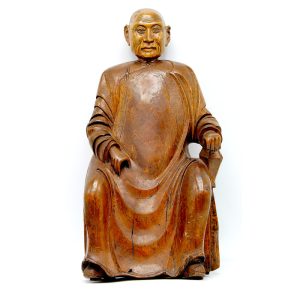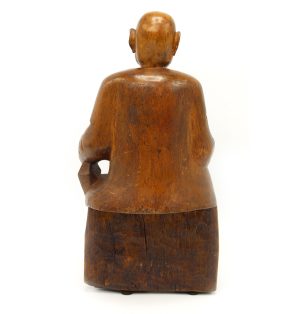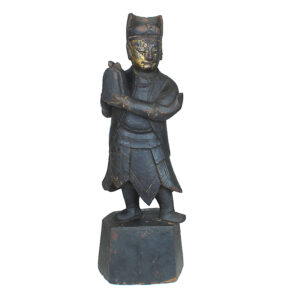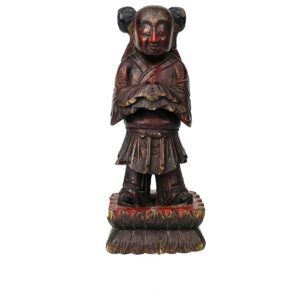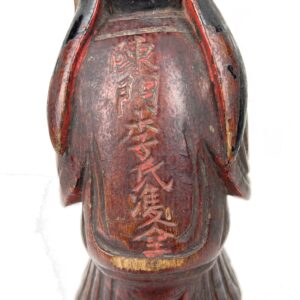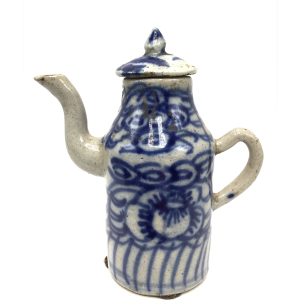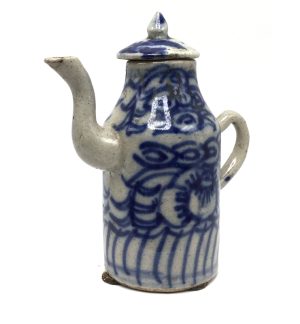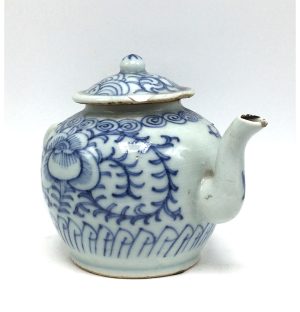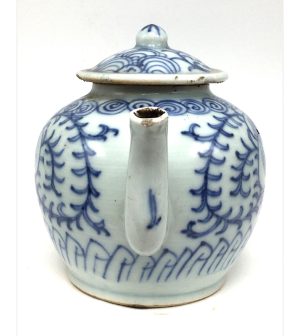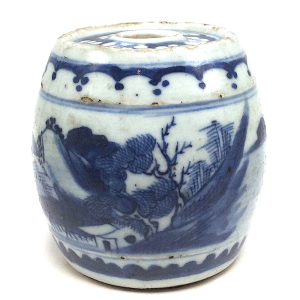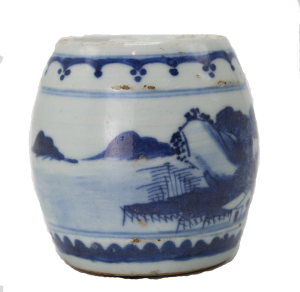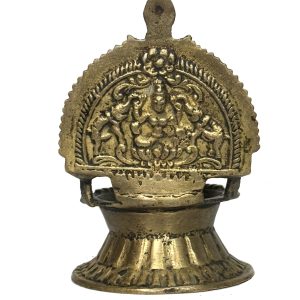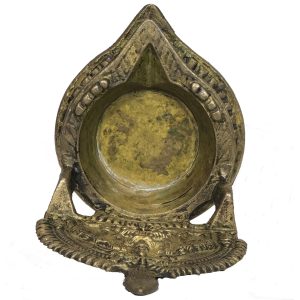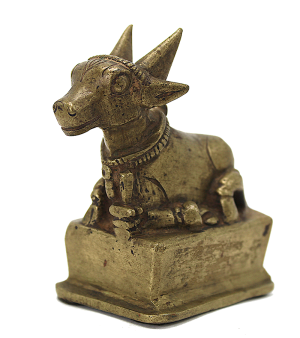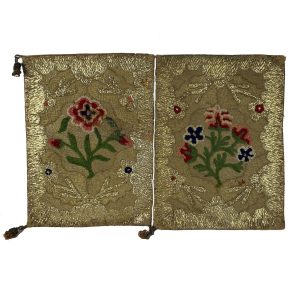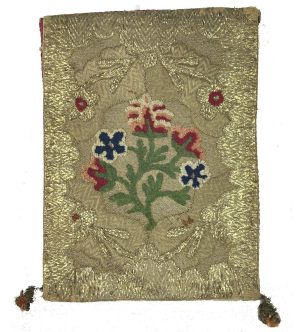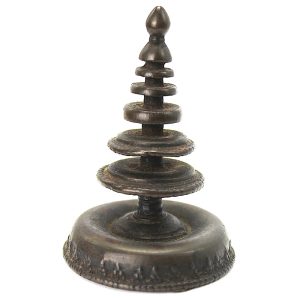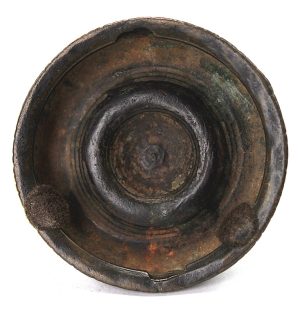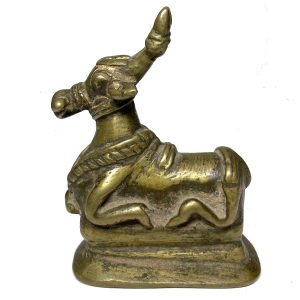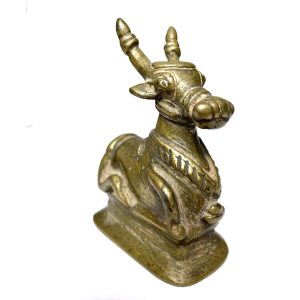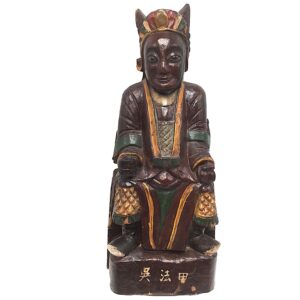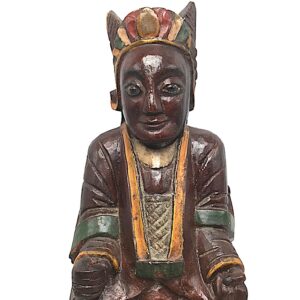Showing 13–24 of 203 results
-
Sale!


$785.00 Original price was: $785.00.$575.00Current price is: $575.00.
H: 10.25” W: 5.125” D: 4” | FREE SHIPPING WITHIN continental us
This very finely carved figure of an ancestor was commissioned by a family of either high status or wealth, having been fashioned from a single piece of an exquisite and rare hardwood with a lustrous patina.
-
Sale!


$435.00 Original price was: $435.00.$365.00Current price is: $365.00.
H: 15.5″. W: 5.5″. D: 4.24″ | FREE SHIPPING WITHIN CONTINENTAL U.S.
Taoist attendant holding an offerings tied with ribbons that symbolized longevity for generations. Some gilt and lacquer has naturally darkened from years age and incense.
-
Sale!


$485.00 Original price was: $485.00.$385.00Current price is: $385.00.
H: 7.5″ W: 3″ D: 2.75″ | FREE SHIPPING WITHIN CONTINENTAL U.S.
Sensitive modeling of the face, body and lotus base, its appealing features and graceful garments, make this diminutive statue truly endearing. The rear inscription indicates it was commissioned to celebrate the wedding of a daughter and, as such would make a superb wedding gift.
-
Sale!


$135.00 Original price was: $135.00.$95.00Current price is: $95.00.
H: 5.25″ W: 4.625″ D: 2.375″ | FREE SHIPPING WITHIN CONTINENTAL U.S.
Charming miniature pitcher probably used in a restaurant or home kitchen as a dispenser for soy sauce, oils or other liquids. Elegant shape, covered with chrysanthemums, plantain leaves and bindweed vines with lotus bud on top.
-
Sale!


$175.00 Original price was: $175.00.$115.00Current price is: $115.00.
H: 5.25” W: 4.75” D: 2.375” | FREE SHIPPING IN CONTINENTAL US
Small teapot with intricate cobalt blue chrysanthemum and bindweed designs widely used in late 19th century in domestic and export wares. Ball handle on lid.
-
Sale!


$255.00 Original price was: $255.00.$195.00Current price is: $195.00.
H: 3.25” Dia: 3.25” | FREE SHIPPING WITHIN CONTINENTAL U.S.
With its round body covered with a Chinese village landscape, mountains, seas and calligraphic scholar owner’s name, this ceramic brush holder/paper weight was used a scholar’s desk along with pots, brushes, water droppers, boxes, ink stones and other objects and would be perfect on any style desk.
-
Sale!


$150.00 Original price was: $150.00.$120.00Current price is: $120.00.
H: 5″ W: 3.25″ D:3.875″ | FREE SHIPPING WITHIN CONTINENTAL U.S.
Brass oil lamp front and back Lakshmi on a lotus, elephants showering water bringing life to the land governed by wisdom and purity that leads to material and spiritual prosperity.
-
Sale!


$155.00 Original price was: $155.00.$125.00Current price is: $125.00.
Ht: 3.5″. W: 1.75″ D: 2.5″ FREE SHIPPING WITHIN CONTINENTAL U.S.
Lost-wax one of a kind brass Nandi figurine on a high pedestal, is incised with decorative detailed adornments on his head and neck with beautiful patina from long daily use in home Hindu pujas.
-
Sale!


$185.00 Original price was: $185.00.$145.00Current price is: $145.00.
H: 3″ W: 10.5″ D: 0.5″ | FREE SHIPPING WITHIN CONTINENTAL U.S.
Bolivian religious document holder likely for priests’ sermons/important documents, brocaded purple fabric with gold thread of stylized passion flowers and roses representing Jesus’ crucifixion and purity .
-
Sale!


$425.00 Original price was: $425.00.$295.00Current price is: $295.00.
H: 3.5″ Dia 2.5″ | FREE SHIPPING WITHIN CONTINENTAL U.S.
Hand-made metal Nepalese 7-level stupa/pagoda with decorative details around the base and round eaves with scalloped edges used for personal worship.
-
Sale!


$395.00 Original price was: $395.00.$225.00Current price is: $225.00.
H: 3.25” W: 1.375” D: 2.5” |. FREE SHIPPING WITHIN CONTINENTAL U.S.
Antique brass Nandi exquisitely crafted with a wonderfully aged patina from use on a home altar. On a raised rectangular platform his delicate incised decorative details delineate features of his sinuous body and graceful long horns extending backwards. Based on a South Indian cow with a humpback.
-
Sale!


$325.00 Original price was: $325.00.$275.00Current price is: $275.00.
H: 12.75″ W: 3.375″ D: 3″ | FREE SHIPPING WITHIN CONTINENTAL U.S.
Either a Taoist house deity/dignitary or an ancestor figure, this colorful provincial carving has painted calligraphy identifying his name. The image has characteristics of Guandi, the God of War holding a tael or a military seal with military maille.
End of content
End of content

